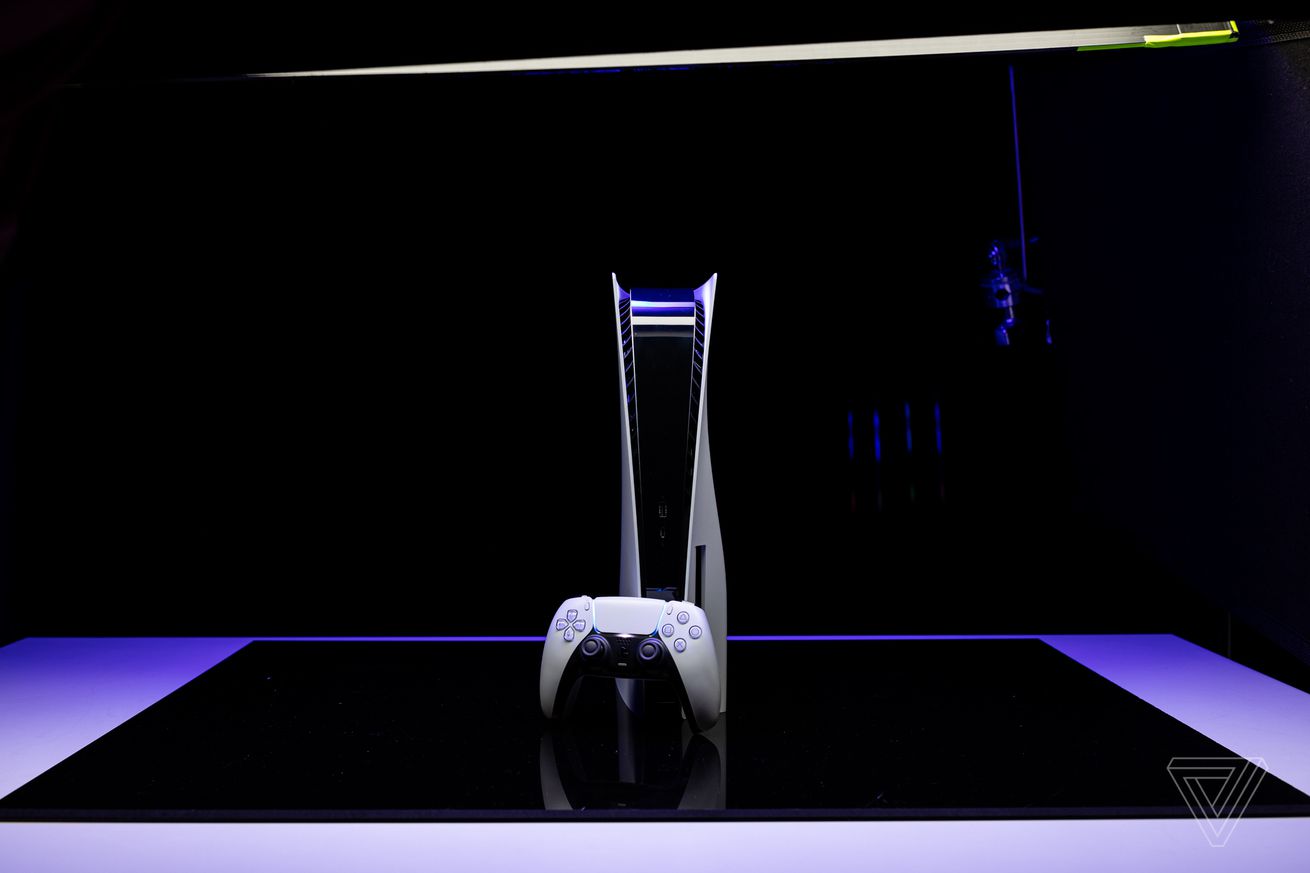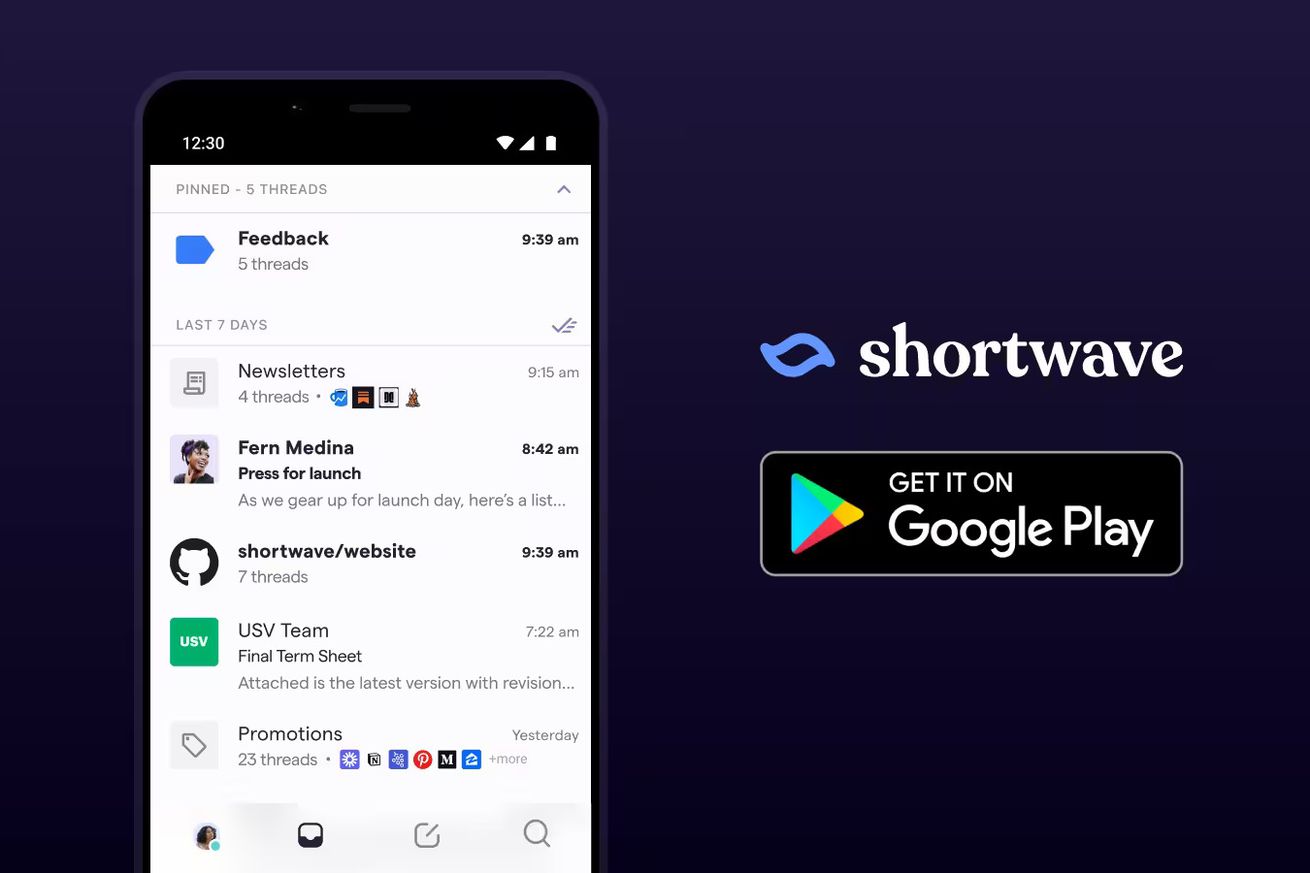It’s a big update year for Samsung’s flip-style foldable — and a much larger cover screen makes all the difference.
Being able to declare an absolute category winner is rare in the smartphone space. But in the case of the Samsung Galaxy Z Flip 5, it’s actually quite easy: this is the best flip-style folding phone you can buy.
It’s a small category, so that helps. It’s even smaller if you’re looking at options available in the US since your choices are basically the Flip 5 or Motorola’s Razr Plus. They have a lot in common, including the fact that they both offer a much bigger, much more useful cover screen than their predecessors. They share the same $999 price tag, too. But Samsung’s flip phone is more durable, its cover screen widgets are more useful, and its camera system is better overall.
That’s not to say that the Flip 5 is the perfect flip-style phone or the best phone you can buy for a thousand bucks. It’s durable for a foldable, but that big “X” in its IPX8 rating means there’s no guarantee against dust intrusion — and dust in a folding phone spells real trouble. You’ll find better camera hardware on most other $999 slab-style phones, including a telephoto lens, and you’ll struggle to get through a full day of heavy use with the Flip 5 on a single battery charge. If any of the above is a major concern, then a flip-style phone might not be for you. But if you are willing to put up with these tradeoffs, then the Galaxy Z Flip 5 is an excellent device.
The flip form factor is particularly good for someone who wants to get more of the basic chores done on their phone without getting sucked into mindlessly checking app notifications and scrolling through news feeds unintentionally. The bigger, improved cover screen on the Flip 5 makes it possible to respond to a text quickly, glance at walking directions, or check the weather without coming face-to-face with absolutely everything on your phone. It’s a powerful tool in the fight for your attention, and the Z Flip 5 is hands-down the best option in its class.
/cdn.vox-cdn.com/uploads/chorus_asset/file/24830720/DSC05260_processed.JPG)
Let’s start with the main attraction: that 3.4-inch cover screen (excuse me, Flex Window, according to Samsung). That may not sound like much, but it’s more than 3.5 times bigger than the 1.9-inch screen on the Z Flip 4. It’s like getting out of a Smart Car and into a sedan — buckle up because you can go places now. Rather than just checking notifications, you can use a full QWERTY keyboard to respond to texts. You can see your daily schedule alongside a monthly calendar in the same view.
Samsung provides a bunch of handy widgets you can enable, disable, and rearrange to your liking. They’re excellent and take great advantage of the available screen real estate; the weather widget shows you current conditions at a glance, and you can scroll down for the next week’s forecast. Tapping on a calendar event brings up all the details. It’s all as the good lord intended — and a much better experience than on the Motorola Razr Plus.
In no particular order, here are some things I used the cover screen to do in the past week:
- Respond to text messages
- Sign my kid out of daycare
- Check arrival times at my bus stop and note that I am definitely missing the next bus
- Read my Threads notifications (all four of them)
- Dismiss approximately 2,000 spam calls
Widgets are great, but part of the appeal of a flip phone — at least for me — is the ability to run certain apps on the cover screen. You need a bit of a sense of adventure here because lots of apps are unequivocally awful on a small screen. But I’ve discovered a few of the apps I use for quick tasks are actually fine on the cover display. It’s a hassle many Flip 5 owners probably won’t want to go through, but for the adventurous few, it’s a big benefit to owning a flip phone.
For reasons mentioned above, Samsung makes it very difficult to run just any old app on the cover screen. You can enable a handful of preselected apps through the Labs menu, but for anything outside of messaging apps, Google Maps, or YouTube, you need to download Good Lock (and an additional module called MultiStar) from the Galaxy App Store. Then you can add additional apps to the cover screen.
You don’t want to scroll through Instagram posts on a screen this small, but it’s totally suitable for quick-hit tasks like checking transit arrival times or translating an unfamiliar Spanish word to English. Placing a mobile order for your neighborhood Starbucks is a stretch, but I’m happy to report that it can be done.
Some apps don’t work quite as well on the Flip 5’s cover screen as they do on the Razr Plus’ slightly bigger display. I had trouble typing in certain apps since Samsung’s cover screen keyboard doesn’t give you a persistent text input box, and whatever you’re writing is liable to get covered up by other UI elements. But on either phone, there’s a very experimental vibe to using a full app, so proceed at your own risk.
/cdn.vox-cdn.com/uploads/chorus_asset/file/24830719/DSC05265_processed.JPG)
The Flip 5’s cover screen itself isn’t the nicest screen I’ve ever used, but it does the job. It’s a 720 x 748 60Hz panel — not as sharp or smooth as the Razr Plus’ screen. But it does get bright enough for use even in direct sunlight, and it’s not a screen you want to look at a lot of photos or play games on, anyway. One thing it has over the Razr Plus? An always-on display. You can see the time, date, battery percentage, and app notification icons without having to tap the screen. Quite literally, you love to see it.
On the downside, the AOD does seem to drag down battery performance noticeably. The Z Flip 5 has a small 3,700mAh battery, so that’s a legitimate concern. With the AOD enabled, I was able to get through a full day of heavy use with 4.5 hours of screen-on time — but only with a nail-biting 5 percent left in the tank as I was calling an Uber at the end of the night.
On a more typical day with three hours of screen-on time, I had 40 percent left by the end of the night. It’s good enough to get most people through a full day, but heavy users will want to work in a midday top-off to avoid going to phone battery jail.
/cdn.vox-cdn.com/uploads/chorus_asset/file/24830638/DSC05195_processed.JPG)
The Snapdragon 8 Gen 2 For Galaxy chipset is just as snappy here as in the S23 series. It seems to run a little warmer in the Flip 5, maybe because there’s less space for cooling mechanisms, but it never got too toasty in my pocket. The base model Z Flip 5 comes with 8GB of RAM and 256GB of storage — a bump up from the Flip 4, which started at 128GB. There’s 25W wired charging (BYO charging brick, of course) and 15W wireless charging with 4.5W reverse wireless charging to top off your earbuds. I have to open the phone and set it juuust so on my stand-style Belkin Qi charger, but it works.
The Z Flip 5 and its bigger Fold 5 sibling are the first Samsung foldables that close flat — previous versions had a visible gap between the two halves near the hinge when closed. The gap is gone, a new droplet-style hinge is in, and there has been much rejoicing. It makes the Z Flip 5 a bit sleeker-looking, though it feels just as chunky as ever in the pocket of my joggers.
The side rails are a flat, polished aluminum that looks nice and feels sturdy. Samsung says that the new hinge’s design can withstand impacts better, but the phone’s IPX8 rating is the same as last year’s. That means it’s resistant to full immersion in water, which is no small feat on a phone with moving parts, but there’s no guarantee against dust intrusion. Samsung’s apparently working on that, but in the meantime, it’s a bad idea to take the Flip 5 to the beach.
/cdn.vox-cdn.com/uploads/chorus_asset/file/24830629/DSC05235_processed.JPG)
The Flip 5’s new cover screen provides a bigger canvas for lock screen customization, and Samsung provides a lot of personalization options. It’s a lot like customizing a smartwatch face — you pick a basic wallpaper style, select your favorite fonts and colors, and save it. From the cover screen itself, you can long press to view and switch between your customized lock screens. As a lock screen enjoyer, I’ve wasted plenty of time trying to get the background color framing a photo of my kid just right. You got me, Samsung.
New to the Flip and Fold this year is an updated flex mode panel — that’s the set of controls that you can enable when you use the phone in an L-shaped laptop mode. You don’t need it in an app like YouTube that’s already optimized for folding phones, but it’s handy for the physical therapy video I follow every day most days that’s only available embedded in a browser window.
/cdn.vox-cdn.com/uploads/chorus_asset/file/24830636/DSC05222_processed.JPG)
I can tap the screen to move the video to the top half of the screen, and the flex mode panel now includes a thumbnail image and customizable controls. This is a very minor update in the grand scheme of things, but it makes the experience of using the phone in this way feel a little more polished and a little less “beta.”
More important than minor software tweaks, the Z Flip 5 continues to come with a strong software support policy: four years of OS updates and five years of security patches. Motorola, on the other hand, is offering three years of OS updates and four years of security patches — and it doesn’t exactly have a great track record for timely updates. Of all the reasons to consider the Flip 5 over the Razr Plus, that’s a strong one.
/cdn.vox-cdn.com/uploads/chorus_asset/file/24830635/DSC05225_processed.JPG)
Generally speaking, folding phones don’t come with the latest camera hardware. That continues to be true of the Flip 5 — same as last year, it comes with a 12-megapixel f/1.8 stabilized main camera and a 12-megapixel ultrawide. There’s a 10-megapixel selfie camera on the inside screen, but one of the nice things about the flip form factor is that it’s easy to use the better rear-facing cameras for selfies, so it’s kind of just there for video calls.
The imaging hardware is run-of-the-mill, and so are the Z Flip 5’s photos. The main camera does just fine in good lighting and turned in a few shots I really dig — give it ample indirect lighting and some vibrant colors, and you’ll be impressed. Portrait mode is good, if not class-leading, like the S23 cameras.
Overall, though, it’s a fairly mediocre camera system for a $1,000 phone. There’s no telephoto lens, and I’m not impressed with Samsung’s digital zoom. Photos from the ultrawide in good lighting are a little flat, and colors look off in dim lighting with plenty of smoothed-over noise. Even low-light selfies with the main camera are hit-and-miss — it chose a shutter speed of just 1/35sec in a dim arena that left me with just one sharp photo out of a handful.
Video clips are fine overall. Samsung says it’s using AI to improve low-light video quality, and I think my low-light video clips look alright. But above all, it’s fun shooting photos and video with a flip phone. You can fold the phone into an L shape and set it down on a table for an instant tripod and hands-free video. You can hold it up camcorder style or move the image preview to the bottom half of the screen like an old-school twin-lens reflex camera and shoot from the hip.
I seem to get the most natural reactions in photos and videos of my toddler when my phone isn’t right in front of my face using any of those methods. I feel a little more engaged in the moment, too. In any case, I’m hoping Samsung upgrades the cameras on the Z Flip 6 so we can get the best of both worlds: good hardware and all that flip phone fun.
/cdn.vox-cdn.com/uploads/chorus_asset/file/24830637/DSC05171_processed.JPG)
There are plenty of ways that the Galaxy Z Flip 5 could be a better flip phone — the cameras could use an upgrade, I’d like to run apps more easily on the cover screen, and dustproofing would be a welcome addition. It’s a bit sleeker with the new fold-flat hinge but still a chunky device that would benefit from some trimming down.
Even though it could be better, it’s easily the best widely available flip phone option right now. For the same price as the Motorola Razr Plus, you get a more consistent camera, robust water resistance versus splash resistance, an extra year of software updates, and much better cover screen widgets. That’s really no contest. The Oppo Find N2 Flip is another option outside of the US, but its cover screen is smaller and less useful, and its durability is uncertain since it lacks any kind of IP rating.
If you’re considering jumping from a traditional slab-style phone to a flip phone, the Z Flip 5 is a great entry point. The cover screen isn’t just a neat party trick — it’s a genuinely useful tool that made my life a little easier in numerous ways while using the phone. It’s a device best suited for someone with a sense of adventure and curiosity when it comes to technology — someone willing to try a new way of doing things and able to roll with it when you inevitably hit a snag. For that kind of person, the Z Flip 5 is a truly rewarding experience.
Photography by Allison Johnson / The Verge






/cdn.vox-cdn.com/uploads/chorus_asset/file/24830690/DSCF2213.jpg)
/cdn.vox-cdn.com/uploads/chorus_asset/file/24830691/DSCF2260_Enhanced_NR.jpg)
/cdn.vox-cdn.com/uploads/chorus_asset/file/24830698/DSCF2290.jpg)
/cdn.vox-cdn.com/uploads/chorus_asset/file/24830889/Picsart_23_08_04_15_45_34_925.jpg)

/cdn.vox-cdn.com/uploads/chorus_asset/file/24830480/CleanShot_2023_08_04_at_13.33.28.png) Image: Meta
Image: Meta




/cdn.vox-cdn.com/uploads/chorus_asset/file/24829624/20230823_Product_Vision_Day_05.jpeg) Image: Fisker
Image: Fisker
/cdn.vox-cdn.com/uploads/chorus_asset/file/24829643/1575080723.jpg) Photo by FREDERIC J. BROWN/AFP via Getty Images
Photo by FREDERIC J. BROWN/AFP via Getty Images/cdn.vox-cdn.com/uploads/chorus_asset/file/24829644/1575080819.jpg) Photo by FREDERIC J. BROWN/AFP via Getty Images
Photo by FREDERIC J. BROWN/AFP via Getty Images/cdn.vox-cdn.com/uploads/chorus_asset/file/24829645/1575080924.jpg) Photo by FREDERIC J. BROWN/AFP via Getty Images
Photo by FREDERIC J. BROWN/AFP via Getty Images/cdn.vox-cdn.com/uploads/chorus_asset/file/24829647/1575080891.jpg) Photo by FREDERIC J. BROWN/AFP via Getty Images
Photo by FREDERIC J. BROWN/AFP via Getty Images
/cdn.vox-cdn.com/uploads/chorus_asset/file/24829628/android_inbox_2x.jpg) Image: Shortwave
Image: Shortwave



/cdn.vox-cdn.com/uploads/chorus_asset/file/24827482/Screen_Shot_2023_08_03_at_11.27.09_AM.jpg) Image: LG
Image: LG
